How to Aerate Your Lawn Easily: Essential Tips and Tricks
- March 8, 2024
- 11 comment
Ever dreamt of a lawn so lush, it feels like a green carpet under your feet? Well, you’re in luck! ‘How to Aerate Your Lawn Easily: Essential Tips and Tricks’ is your go-to companion for turning that dream into reality. Aerating might sound like a chore, but it’s really a ticket to a vibrant garden. It’s all about letting your lawn breathe, drink, and feast on nutrients right down to the roots. We’ve put together this guide to walk you through each step, making the journey as breezy as a walk in the park. So, are you ready to give your garden the glow-up it deserves?
Guide on How to Aerate Your Lawn Easily
Choosing the Right Time
- Cooler Temperatures: Fall brings milder temperatures compared to the harsh heat of summer. These cooler conditions are less stressful for grass, making it an ideal time for aeration and the subsequent recovery and growth of the lawn.
- Active Grass Growth: During fall, the grass is in a growth phase, actively strengthening its root system in preparation for the winter months. Aeration at this time enhances the grass’s ability to absorb essential nutrients and water, further bolstering its growth and resilience.
- Ideal Conditions for Overseeding: If your lawn maintenance plan includes overseeding, fall aeration creates the perfect environment for seed germination. The holes produced by aeration provide seeds with a protected space to settle, ensuring better soil contact and improving their chances of successful germination and establishment.
Signs Your Lawn Needs Aeration
Compacted Soil
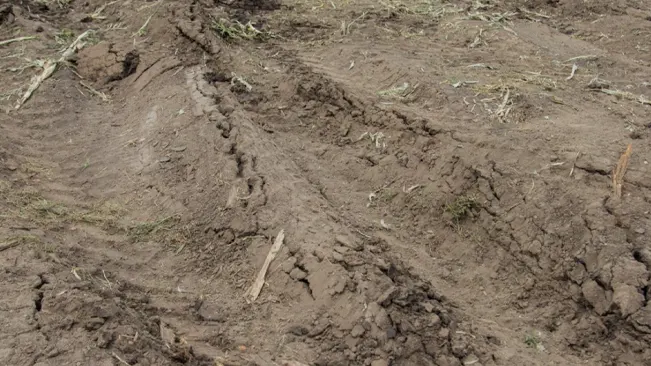
Compacted soil is a common issue in lawns that endure heavy foot traffic, such as areas where children frequently play or paths that are regularly walked upon. This compaction results in reduced air spaces within the soil, which are crucial for the healthy exchange of gases and for allowing water and nutrients to reach plant roots. When soil becomes compacted, it can feel hard or dense to the touch, and you may notice water pooling on the surface after irrigation or rain, indicating poor absorption. Aerating your lawn can alleviate this issue by mechanically removing small plugs of soil, thereby reintroducing air space, improving water infiltration, and facilitating the deeper penetration of roots.
Thinning Grass

A clear indicator of a lawn in need of aeration is the thinning of grass. This symptom arises when grass roots struggle to grow through compacted soil, leading to inadequate access to essential nutrients and water. This stress on the grass manifests as sparse or patchy growth, with areas of the lawn looking less lush than others. Aeration addresses this problem directly by loosening the soil and enhancing its structure, thereby enabling roots to grow more freely and access the resources they need to support healthy grass.
Pooling Water
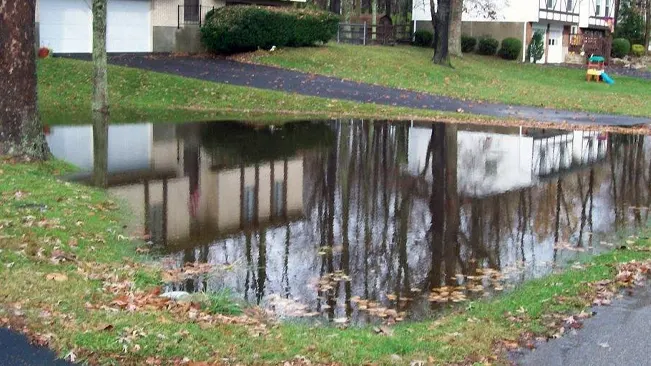
Observing how water behaves on your lawn can offer insights into its health. If you notice water pooling in certain areas after watering or rainfall, it suggests that the soil beneath is compacted and unable to absorb moisture effectively. This not only deprives the grass of necessary water but can also lead to issues like moss growth or fungal diseases. Aeration breaks up the compacted soil layers, creating channels that allow water to penetrate deeper into the soil, improving hydration and reducing surface runoff.
Thatch Build-up
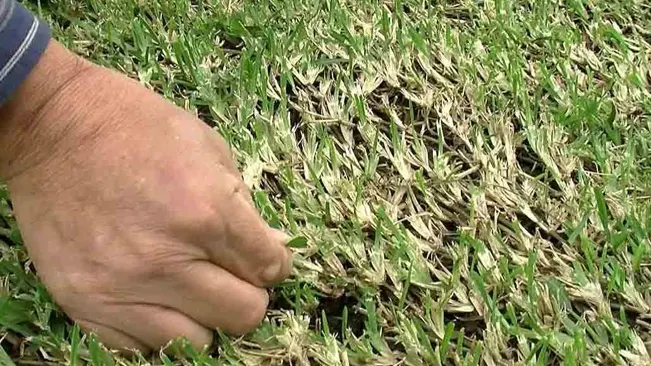
Thatch is a layer of organic material, including dead grass, roots, and debris, that accumulates between the soil surface and the live grass. While a thin layer of thatch can be beneficial, acting as mulch, a layer exceeding half an inch thick can become problematic. Excessive thatch acts as a barrier to moisture, air, and nutrients, impeding their reach to the soil and roots. Aerating helps break up this layer, allowing the organic material to decompose more efficiently and improving the overall health of the lawn.
Lawn Stress
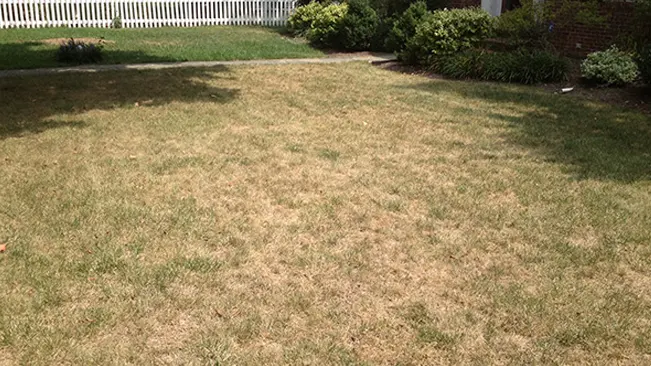
Signs of stress in your lawn, such as dull, discolored, or unhealthy-looking grass, even with adequate watering and fertilization, can indicate underlying issues like soil compaction or excessive thatch. These conditions restrict the grass’s access to necessary resources, leading to visible stress. Aerating the lawn can rejuvenate stressed grass by enhancing the flow of water, air, and nutrients to the roots, promoting recovery and vigorous growth.
Poor Drainage
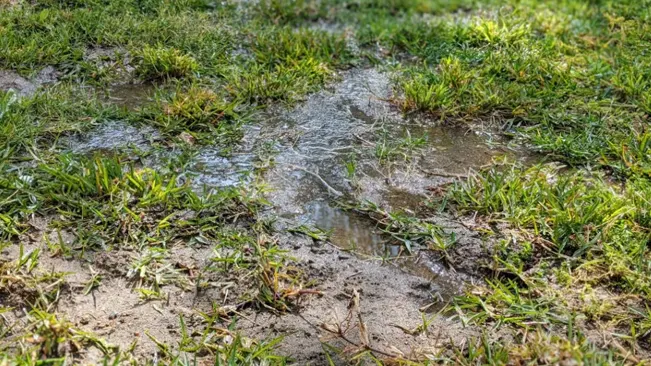
Poor drainage is often a consequence of compacted soil, with affected areas remaining soggy long after rain. This not only stresses the grass but can also encourage the growth of undesirable moss and weeds. Aerating the lawn introduces channels in the soil, improving drainage by facilitating the downward movement of water away from the surface. This not only alleviates waterlogging but also contributes to a healthier, more resilient lawn.
Preparing Your Lawn for Aeration
Water Your Lawn
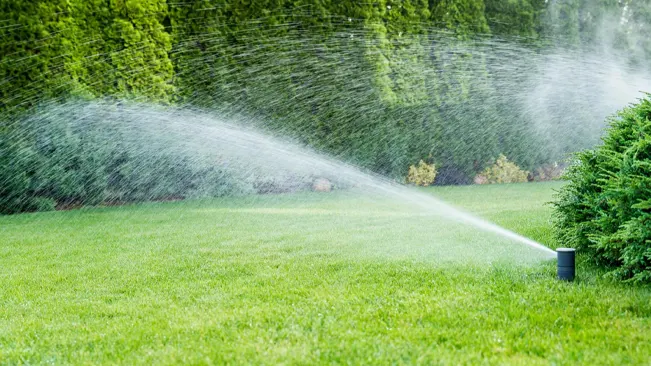
Ensuring your lawn is adequately watered before aeration is crucial for softening the soil, which facilitates easier penetration by the aerator. Ideally, you should water the lawn deeply one or two days prior to aeration, aiming to moisten the soil to a depth of at least 1 inch. This preparatory step is vital for achieving optimal aeration results, as dry, hard soil can impede the aerator’s ability to extract soil cores effectively. However, it’s important to strike a balance; the soil should be moist but not saturated or muddy, as overly wet conditions can cause the aerator to clog and potentially damage the lawn.
Mow Your Lawn
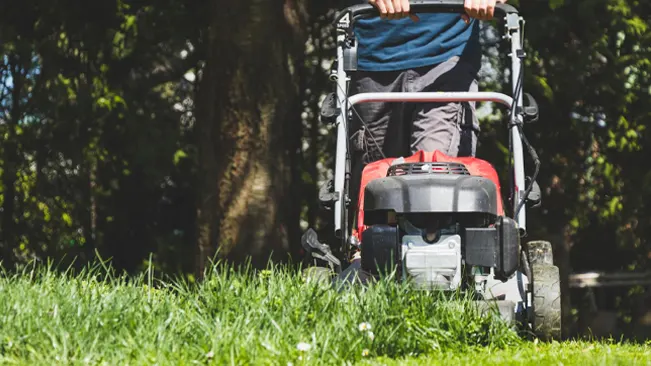
Mowing your lawn before aeration can significantly improve the process’s effectiveness. By reducing the grass height, you provide the aerator with better access to the soil surface, ensuring deeper and more uniform core extraction. This doesn’t mean you should scalp your lawn; instead, trim it to a slightly lower height than your regular mowing level. This precaution helps prevent the grass from becoming stressed or damaged. A neatly mowed lawn also makes it easier to identify and mark any obstacles or areas that require special attention during aeration.
Check for Thatch
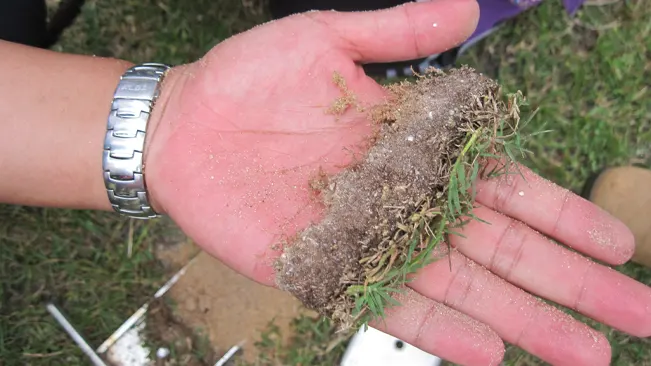
Thatch, a layer of dead grass and organic matter, can hinder water and nutrient penetration when too thick. Before aerating, assess the thickness of the thatch layer by inspecting a small, dug-out section of your lawn. If the thatch layer exceeds ½ inch, aeration can be beneficial in breaking it up and promoting its decomposition. For lawns with severe thatch problems, consider dethatching before aerating to ensure the best possible conditions for improving soil aeration and grass root development.
Equipment For Lawn Aeration
Spike Aerators
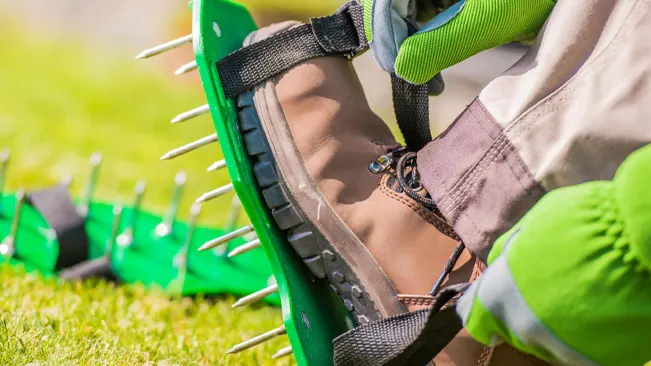
Spike aerators are fundamental tools in lawn aeration, characterized by their simplicity and ease of use. They employ solid tines or spikes to pierce the soil, creating narrow channels that facilitate the penetration of air, water, and nutrients directly to the grass roots. This method is particularly suited for small-scale aeration tasks or for addressing specific problem areas within a lawn. Manual versions, such as aeration shoes or handheld spike tools, are convenient for homeowners with smaller lawns or for targeted aeration around delicate areas where machinery cannot reach. While spike aeration is less invasive than core aeration, it is also somewhat less effective in alleviating deep soil compaction.
Powered Push Aerators
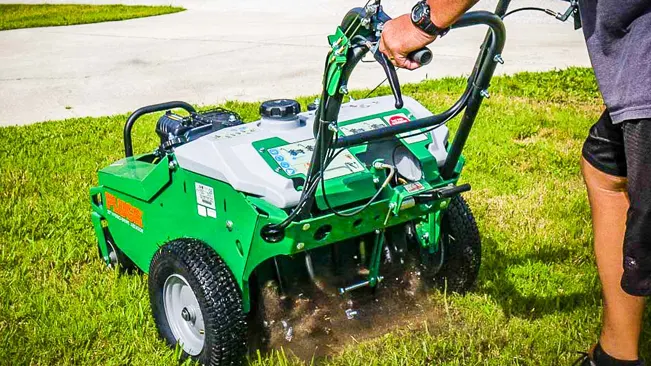
Resembling the form and function of a standard lawn mower, powered push aerators offer a balance between efficiency and maneuverability. These aerators are self-propelled, significantly reducing the physical exertion required compared to manual aerators. They are typically equipped with core aeration mechanisms, extracting soil plugs to alleviate compaction and enhance soil health effectively. Powered push aerators are most suitable for medium-sized lawns where the use of a tow-behind aerator might not be feasible, but where manual aeration would be too laborious.
Hand-Held Core Aerators
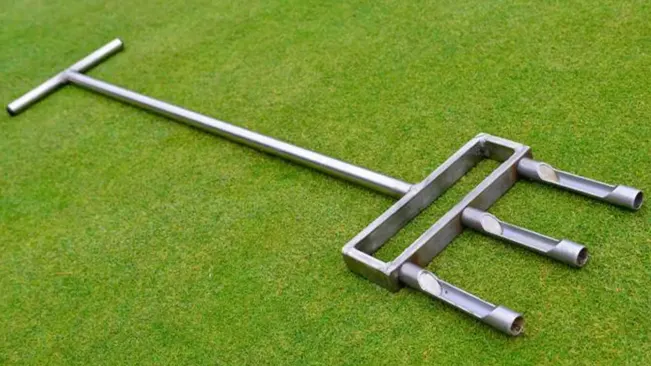
For targeted aeration tasks or small patches of compacted soil, hand-held core aerators are an effective tool. These manual devices allow for precise control, enabling the user to aerate specific areas of the lawn without disturbing surrounding grass. While hand-held core aerators require more physical effort than mechanical aerators, they are ideal for small lawns, gardens, or for spot treating areas that exhibit signs of compaction or poor drainage. Their portability and ease of use make them a handy tool for quick aeration jobs or for lawns that only require occasional aeration
Aeration Technique
Aeration techniques differ significantly from the precise lines required in lawn mowing, allowing for a more flexible approach to ensure effective soil perforation. The primary aim of aeration is to facilitate improved air, water, and nutrient flow to the grass roots by creating ample holes in the soil. This process is less about achieving a certain aesthetic and more about maximizing the health benefits for the lawn.
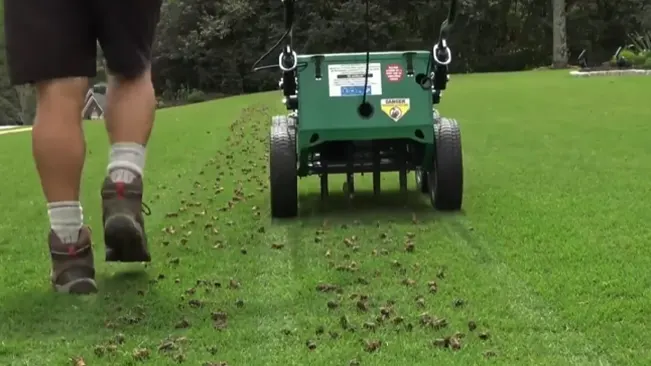
When performing aeration, it’s crucial to cover as much ground as possible, focusing on thoroughness rather than pattern uniformity. Whether employing a crisscross, circular, or random pattern, the objective remains to ensure the entire lawn is adequately aerated. Overlapping each pass slightly helps prevent any untreated patches, especially in high-traffic or compacted areas that may require additional attention. Ultimately, the goal is comprehensive coverage, with each hole created playing a vital role in enhancing the lawn’s overall health and vitality.
Operating the Aerator
Operating an aerator shares some similarities with using a lawn mower but includes additional features specific to the aeration process. Before you begin, take some time to familiarize yourself with the aerator’s controls. Most aerators have levers or switches that engage the tines—these are the components that penetrate the soil to create aeration holes. There’s also typically a mechanism to adjust the depth of penetration, allowing you to customize the aeration based on your lawn’s specific needs and soil conditions. This customization is crucial for ensuring that the aeration is effective without being overly invasive.
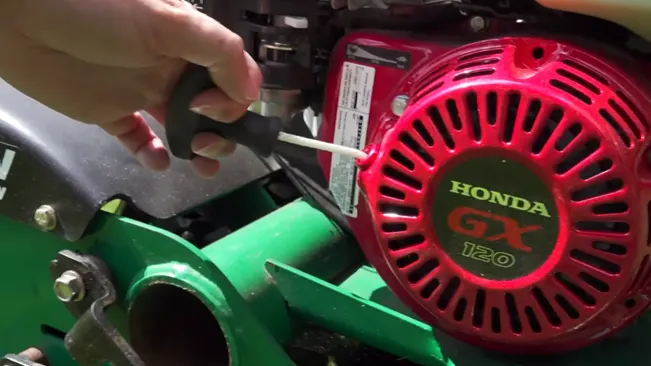
If your lawn is equipped with an irrigation system, it’s imperative to take precautionary steps to avoid damaging the sprinkler heads. Walk through your lawn and mark each sprinkler head with a visible flag. This step will help you avoid these areas with the aerator or navigate carefully around them, preventing costly damages to the irrigation system and ensuring a smooth aeration process without unnecessary interruptions.
Common Mistakes to Avoid
- Aerating at the Wrong Time: Avoid aerating during extreme heat or drought. For cool-season grasses, early fall is best; for warm-season grasses, late spring to early summer is ideal.
- Ignoring Soil Moisture: Don’t aerate too dry or wet soil. Aim for moist conditions, ideally a day after moderate rainfall or watering.
- Overlooking Lawn Preparation: Mow your lawn to a lower height and clear debris before aeration. Mark any buried utilities or obstacles.
- Using Incorrect Aeration Equipment: Choose the right aerator for your lawn’s needs. Spike aerators might not be as effective as plug aerators in certain conditions.
- Incomplete Coverage: Ensure thorough coverage by overlapping passes and covering the entire lawn systematically.
- Neglecting Post-Aeration Care: Follow up aeration with necessary lawn care, including watering, overseeding, and applying soil amendments or fertilizers.
- Aerating Too Frequently: Aerate only as needed, typically once a year or every other year, to avoid disrupting the turf and root system unnecessarily.
Related Post:
- Unlock Lawn Health: The Secret Behind Solid & Hollow Aeration Tools
- Lawn Aeration: When to Do It and Why It Matters
Conclusion
In conclusion, effective lawn aeration is key to promoting soil health and lush grass growth. It involves timely aeration, maintaining optimal soil moisture, and thorough lawn preparation. Selecting the right equipment and ensuring complete lawn coverage are critical, as is proper care post-aeration, including watering, overseeding, and fertilization. Avoiding over-aeration is also essential to prevent lawn stress. Adhering to these practices helps in achieving a vibrant and resilient lawn.
FAQs
1. What is lawn aeration?
Lawn aeration is a process that involves creating small holes in the soil to allow air, water, and nutrients to penetrate the grass roots. This helps improve soil structure and promotes healthier lawn growth.
2. Why is aeration important for my lawn?
Aeration is important because it alleviates soil compaction, enhances nutrient uptake, improves water infiltration, and stimulates root growth, leading to a more vigorous and resilient lawn.
3. When is the best time to aerate my lawn?
The best time to aerate your lawn depends on the type of grass. For cool-season grasses, early fall is ideal. For warm-season grasses, late spring to early summer is the best time.
4. How often should I aerate my lawn?
Most lawns benefit from annual aeration. However, lawns with heavy foot traffic or clay soil may need aeration twice a year, while less compacted lawns might only require aeration every other year.
5. Should I aerate a dry or wet lawn?
Aerate when the soil is moist but not saturated. Water your lawn a day before aeration if it’s dry, but avoid aerating immediately after heavy rainfall to prevent soil compaction.
6. Spike aerator vs. plug aerator: which is better?
Plug aerators are generally more effective as they remove cores of soil, relieving compaction more thoroughly. Spike aerators can sometimes increase compaction in certain soil types.
7. What should I do after aerating my lawn?
After aeration, it’s beneficial to water your lawn, overseed, and apply a starter fertilizer to encourage rapid turf recovery and growth.
8. Can I walk or mow my lawn immediately after aeration?
It’s best to give your lawn a few days to recover before heavy use. You can mow the lawn once the grass has had some time to grow and the plugs have started to break down.
9. Do I need to remove the soil plugs left after aeration?
No, it’s not necessary to remove the plugs. They will break down naturally and contribute to improving the soil structure.
10. Can I aerate my lawn too much?
Yes, excessive aeration can stress the lawn by disrupting the turf and root system. Stick to the recommended aeration frequency for your lawn type and soil condition.

Joel Cunningham
Forestry AuthorI'm Joel Cunningham, an expert in pruning and weed management with over a decade of experience. My skills are rooted in formal training and extensive practice, focusing on advanced pruning techniques and efficient weed control. I'm known for my quality work, precision, and deep understanding of plant health and soil dynamics. My contributions extend to educational initiatives where I share sustainable practices and advice, establishing myself as a reliable and authoritative figure in the gardening community.
11 comments
SC centipede lawn with irrigation system.I plan on aerating mid April after watering to a depth of 1" before.Lawn is young,4 yrs old.need to beef up base.Compost spread about 1inch thick after aeration sound healthy?
Bob
March 14, 2024 2:47 pmAbsolutely, aerating in mid-April and watering to a depth of 1 inch beforehand is a solid plan for your SC centipede lawn. Spreading a 1-inch layer of compost post-aeration is beneficial for soil health and grass vitality, enhancing nutrient content and structure. Ensure the compost is well-aged and free of seeds or pathogens. Lightly rake it into the aeration holes for optimal effect, helping to build a strong and lush lawn base.
Joel Cunningham
March 25, 2024 6:16 amBest way to prune a Japanese Maple?
manuel pineda
March 13, 2024 12:22 amA lot of lawn care companies offer a chemical aeration product now. It is much simpler for them to do. But how well does it work? Is mechanical better than chemical? Thanks
Bcp
March 12, 2024 4:22 amChemical aeration can be convenient and good for maintenance, especially for hard-to-reach areas, by improving soil condition chemically. Mechanical aeration offers immediate relief for compacted soil by physically removing plugs, making it more effective for severe compaction. The best choice depends on your lawn's needs and the level of compaction.
Joel Cunningham
March 25, 2024 6:23 amAfter aerating my lawn with a hand held aerator should I fill the holes with sharp sand ???
Geoff
March 11, 2024 2:24 pmAdding sharp sand to the holes after aerating can help improve drainage and soil structure in heavy clay soils. It's important to assess your lawn's needs first, as adding sand to already sandy or well-draining soil might not be beneficial. Use sand moderately and consider consulting a lawn care professional if unsure.
Joel Cunningham
March 25, 2024 6:27 amI've been looking for electric or gas powered aerator , something not too giant that I need a truck to move it. Any suggestions. I've rented in the past from Home Depit and would like to purchase something.
David Moss
March 11, 2024 1:32 amHi David Moss, You can read our article of Best Lawn Aerator for the Money 2024: https://forestry.com/best/best-lawn-aerator-for-the-money-2024/

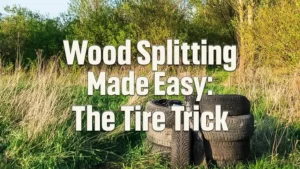











Very informative. Very easy to understand and simple. Thank You for this.
David Dawson
March 17, 2024 7:12 amHi David Dawson, Thank you for reading my piece. you can read some related post here: Unlock Lawn Health: The Secret Behind Solid & Hollow Aeration Tools, How to Transform Your Lawn: The Single Application Solution, Lawn Aeration: When to Do It and Why It Matters
Joel Cunningham
March 17, 2024 8:47 am